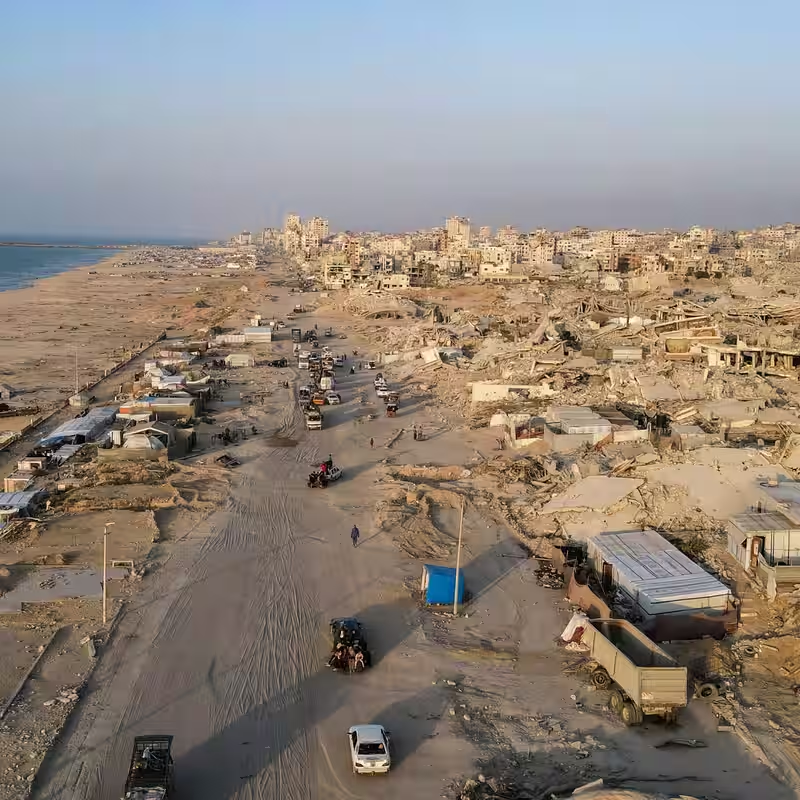Table of Contents
- U.S. Surveillance Drones Take to Gaza Skies
- Why the Ceasefire Needs Watching
- New U.S. Civil-Military Hub in Southern Israel
- A Shift in U.S. Intelligence Approach
- How Israel and Hamas Are Responding
- What This Means for Middle East Diplomacy
- Sources
U.S. Deploys Drones Over Gaza to Monitor Ceasefire
In a significant escalation of its oversight role in the Israel-Hamas conflict, the United States has begun flying surveillance drones over the Gaza Strip to independently verify compliance with the fragile ceasefire agreement. According to Israeli and American defense officials, these U.S. drones are now actively monitoring ground activity in real time—with Israel’s explicit consent.
The move marks a notable shift: while the U.S. has previously used aerial assets to locate hostages, this is the first time American drones are being deployed specifically to monitor ceasefire adherence—an effort aimed at building transparency and trust between warring parties.
Why the Ceasefire Needs Watching
The truce, brokered earlier this month by U.S., Qatari, and Egyptian mediators, remains precarious. Recent flare-ups—including sporadic gunfire and delays in the exchange of deceased hostages and Palestinian prisoners—have raised fears of a full resumption of hostilities.
With over two years of brutal conflict having devastated Gaza’s infrastructure and displaced millions, international stakeholders view third-party verification as essential to preventing another spiral of violence. “You can’t just take someone’s word for it anymore,” said one U.S. defense official, speaking anonymously due to the sensitivity of ongoing operations.
New U.S. Civil-Military Coordination Center in Southern Israel
The drone missions support a newly established Civil-Military Coordination Center in southern Israel, launched last week by U.S. Central Command (CENTCOM). The center serves as a real-time hub for data collection, humanitarian coordination, and ceasefire monitoring.
Officials say the center integrates drone feeds with satellite imagery, on-the-ground reports, and diplomatic channels to produce a comprehensive picture of activity inside Gaza—something previously reliant almost entirely on Israeli intelligence.
A Strategic Shift in U.S. Intelligence Approach
Historically, the U.S. has deferred to Israel for situational awareness in Gaza. But with growing concerns about civilian casualties, aid blockades, and potential ceasefire violations by either side, Washington is asserting its own observational capacity.
“This isn’t about distrust—it’s about redundancy,” explained a former Pentagon analyst. “If both sides know an impartial eye is watching, they’re less likely to test the limits.”
The drones are reportedly unarmed reconnaissance models, similar to the MQ-9 Reaper variants used for surveillance in other conflict zones. Flight paths and technical specs remain classified.
How Israel and Hamas Are Responding
Israel has publicly welcomed the U.S. monitoring effort, viewing it as validation of its own compliance and a deterrent against Hamas rearmament. “Transparency strengthens our position,” said an Israeli military spokesperson.
Hamas has not issued an official statement, but regional sources suggest the group is wary—particularly given U.S. intelligence’s role in past targeting operations. Still, with the group under immense pressure to maintain the truce amid humanitarian collapse, overt opposition seems unlikely for now.
What This Means for Middle East Diplomacy
The drone deployment signals a deeper U.S. operational footprint in post-war Gaza governance—a potential precursor to expanded peacekeeping or reconstruction roles. It also underscores Washington’s commitment to a “verified, not assumed” peace process.
As ceasefire talks continue in Cairo and Doha, the presence of American eyes in the sky may prove as crucial as the words spoken around the negotiating table. For a region scarred by broken promises, independent oversight could be the thin thread holding hope together.
Sources
U.S. Flies Drones Over Gaza to Monitor Cease-Fire, Officials Say – The New York Times




